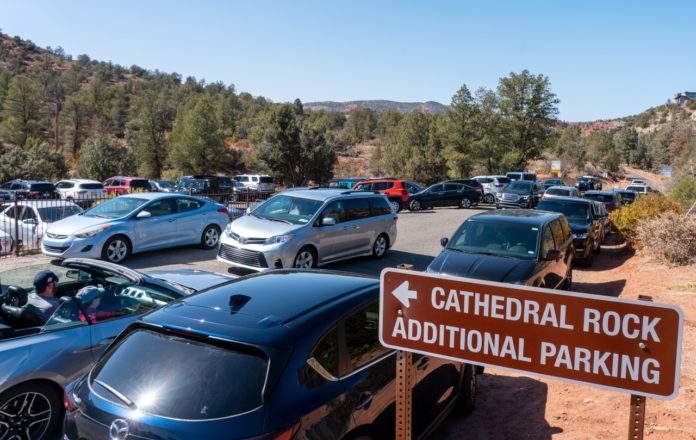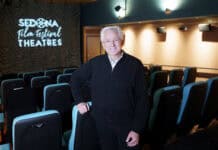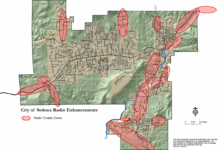
Illegal parking at trailheads has always been an issue — especially in spring and fall — but lately it’s turned into a year-round problem.
As a way to help combat the issue, the city of Sedona is in the process of hiring additional traffic control assistants, who fall under the purview of the public works department, as well as more community service aides who are part of the police department. These staffers will be assigned to various trailheads in the area to communicate with visitors when an area is over capacity and no further parking will be allowed. The CSAs will have authority to issue citations, like they do in Uptown, but the TCAs do not and instead help with directing traffic.
“We are looking to communicate options for visitors to avoid congested areas and times, and where parking is allowed, to reduce safety issues,” City Engineer and Public Works Director Andy Dickey said.
Their goal is to have three to four TCAs assigned to trailheads.
“Currently all TCAs are part time and will be on staff year-round Dickey said. “We do have one full-time position, Right of Way supervisor, that manages the program as a part of their duties.”
Over the past year the city has experienced visitor demand at trailheads growing to levels the city hasn’t seen in the past, Dickey said.
“This has resulted in visitors forcing parking where there is none available,” he said. “These parking issues spill into adjacent residential neighborhoods, often creating safety concerns.”
SPD Chief Charles Husted said the trailheads within the city have certainly experienced a spike in activity, particularly on the weekends.
“On occasion, we’ve had to temporarily restrict access on some of our narrower roadways and tow vehicles to ensure spacing in the event an emergency vehicle needs to pass,” he said.
“Despite a lull during the initial portion of the pandemic, we’ve seen a consistent uptick in parking challenges that impact trailheads and the surrounding neighborhoods. We’ve been actively working with our partners in Public Works, community members, and other stakeholders to problem solve and respond to these issues.”
Dickey said the U.S. Forest Service is also working on improvements that will help relieve demand in some trailhead areas.
“They have been working to expand parking at several locations,” Dickey said of the USFS. “They also believe it is important to manage the level of trail use and support ways of distributing visitors to less-used trails.”
While TCAs will assist with these new trailhead parking issues, Dickey said they will still be mainly focused on the core intent of the program, which is to manage traffic congestion. TCAs can be seen in Uptown or on State Route 179 controlling crosswalks during peak congestion, to help traffic flow more efficiently.
Husted said the police department is actively seeking candidates to bolster its cadre of CSA team members to at least six. Also, in the coming fiscal year, they’re proposing a strategy to add staffing and oversight capacity that will enhance the department’s position in addressing the various challenges associated with increasing activity within the community.
“Assigning CSA, TCA and other non-sworn professional staff to the impacted areas is broadly beneficial,” Husted said. “However, that aspect of the response is merely one piece of the overall holistic approach to addressing and mitigating the challenges associated with the uptick of trailhead and neighborhood traffic congestion. Our collaborative approach should remain nimble enough to adjust to locations and circumstances as needed.”





















